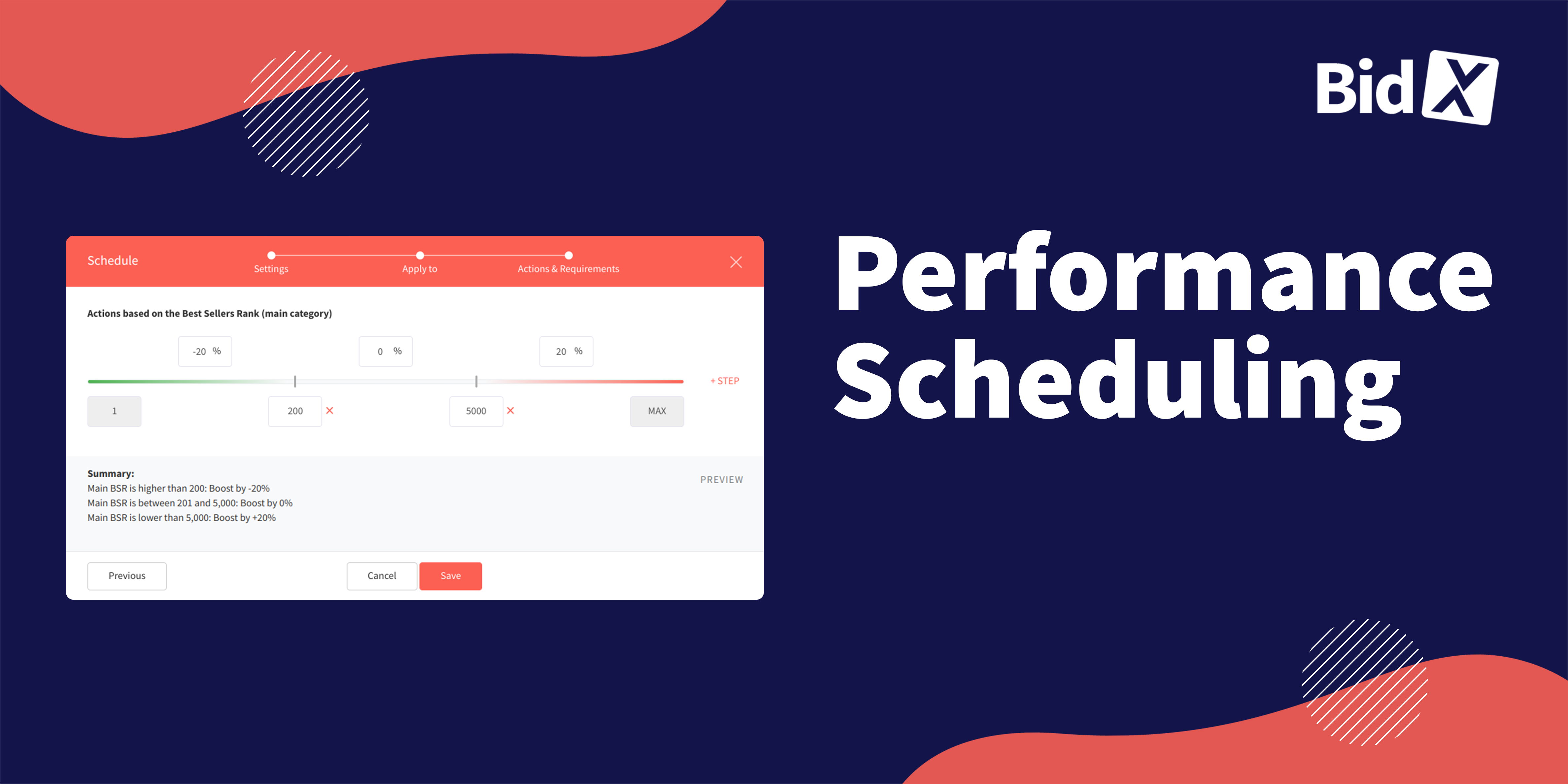Amazon Best Sellers Rank: A Guide to Improving Your Amazon BSR
Amazon offers an essential metric for sellers to gauge their success in the marketplace: the Amazon Best Sellers Rank (BSR).
Unlike a traditional bestseller list, which may include only the top 10 or 100 items in a given category, Amazon ranking methods work differently. Any product that's had at least one sale may be listed on Amazon BSR among thousands of other items. But there are sub-rankings, too, so the same product may be ranked differently in multiple categories and subcategories.
In this article, we'll explain what Amazon BSR is, how it's calculated, and what makes for a good Amazon sales rank. We'll also look at the difference between BSR and organic ranking, as well as tips for sellers to slide their products up the ranks.
What Is Amazon Best Sellers Rank?
The Best Sellers Rank on Amazon is a number-based ranking system that shows how well products are selling on the platform compared to others in the same main or subcategory.
Amazon awards a BSR to any product — out of the millions of products available on the platform — that has sold at least one unit within the timeframe before the ranking algorithm refreshes hourly.
As such, BSR shows the relative popularity of a product compared to others in the same category. It's a helpful way for sellers to gauge where their product performance stands in the market and spot trends that might help them improve sales.
Here's an example:

In the above image, the red arrow and circle indicate this particular product's BSR of 465 in the main category "Tools & Home Improvement." By contrast, the blue arrow and circle show a BSR rank of 6 within the subcategory "Handheld Flashlights." The lower the number, the better the ranking, so this product is doing well in the subcategory, but maybe not as well in its parent category.
Put another way, only five flashlights are outselling this particular model in the more granular subcategory of "Handheld Flashlights." But 464 products in the much larger "Tools & Home Improvement" category, which may include drills, saws, and wrenches, are also outselling this flashlight.
How Is Amazon Best Sellers Rank Calculated?
"Category rankings are based on Amazon sales," to quote the platform's Help & Customer Service section. Not surprisingly, the platform doesn't explain how the calculation works beyond that, but some Amazon sellers believe the following factors contribute to the BSR formula:
- Sales velocity
- Past and current sales (total)
- Competitor products
- Number of reviews
- Changes in pricing, such as sales and promotions
- Amazon fee estimates
Changes in any of the above factors may affect a product's BSR. But the first two — sales velocity and total past and current sales — are believed to be the most important.
Once the algorithm refreshes hourly, Amazon recalculates the BSR for all products in a specific category, likely causing changes in ranking.
For example, if Product A and Product B rank #4 and #5 respectively, but Product B sells one more unit than Product A in the same hour window, it's possible Product B's ranking will move ahead of Product A during the next refresh.
Seasonality may also affect BSR, with some products sliding up or down the ranks depending on whether they're in high demand at a particular time of year.
What Is a Good Amazon BSR?
Because Amazon BSR is a relative ranking, determining what makes a good BSR depends on the category and subcategory.
For instance, the flashlight example above ranks 465 in "Tools & Home Improvement" but 6 in its subcategory, "Handheld Flashlights":

Though a ranking of 465 for the main category may seem low at first glance (it's in the hundreds, after all), coming in at 6th place for the subcategory sounds a lot better.
But an Amazon BSR in the hundreds — or even thousands — can still be a good ranking, depending on how well it outsells all other products in the same category.
Consider that there are roughly 70,000 items listed in the "Tools & Home Improvement" main category, according to the search results below …

... and yet, the flashlight is in the top .7% of best-selling products in that category, even though it comes in at #465. Not bad for a niche item!
What's the Difference Between Amazon Best Sellers Rank and Organic Ranking?
Some sellers may confuse Amazon BSR with organic ranking; they believe the number assigned to their product in the Best Sellers Rank determines (or factors into) the order in which the product appears to customers on the search engine results page (SERP).
But Amazon BSR and organic ranking are two different things. Organic ranking is about how well a product appears on the SERPs based on keywords used in the search query, whereas Amazon BSR is about how well it sells compared to other products in the same category.
For instance, after searching for "flashlight" on Amazon, the top organic result came back with a BSR of 3,417 in "Tools & Home Improvement" and the second result showed a BSR of 1,026 in the same category:


Although it may seem counterintuitive, the flashlight with the lower (better) Amazon BSR of 1,026 didn't rank as well in search as the product with the higher (worse) BSR of 3,417. The #2 flashlight in SERP also showed a better ranking in the subcategory — #13 versus the top product's #65 in "Handheld Flashlights" — yet it still lost out in the SERP.
This is because Amazon uses its BSR algorithm to determine rank within each category but uses an entirely different (and complex) set of metrics to calculate organic ranking on the SERP. So a product that ranks higher in Amazon BSR may not necessarily rank higher in organic search.
How Can I Use the Amazon Best Sellers Rank?
Amazon BSR can be used in product research and competitor analysis, but it may also serve as a powerful metric for tracking a product's performance over time and adjusting goals accordingly.
Here's the breakdown:
Product research
Whether it's wholesale, arbitrage, or private-label selling methods, Amazon BSR can help sellers identify the most in-demand products in any category or subcategory. This, in turn, can help them make informed decisions about which items to add to their product line or inventory for the best return on investment.
Competitor analysis
The BSR can also provide sellers with an overview of the competition. By identifying competitors with lower Amazon BSR, sellers can spot trends and opportunities to differentiate their products or pricing, such as by offering better features or a more competitive price. They may also identify competitor keywords and other optimization techniques to include in their product listings.
Product performance tracking
Sellers may also use BSR as a metric to track an item's performance over time and use any new insights to adjust their marketing strategy, pricing, or product features.
For example, let's say a seller has a product with a BSR of 1,000 based on 500 sales in July. Over the next 30 days (end of August), the seller finds that the BSR of their product has dropped to 1,500 with the same number of transactions.
However, in August of the previous year, the same product had a BSR of 500 with the same amount of sales. From this, the seller can deduce that something has changed either in their product listing (e.g. keywords) or in the marketplace itself, which has caused their product to drop in ranking. It is likely that new competitors have entered the market or existing competitors have been able to improve their sales performance, resulting in a worse BSR despite stable sales.
Whatever the reason, this insight can help sellers adjust their optimization strategies, product features, or pricing to get back to their desired ranking.
How Can I Improve My Amazon Best Sellers Rank?
The most clear-cut answer is to outsell the competition. The more units sold, the higher the BSR.
But of course, there are other strategies sellers can employ to improve their Amazon Sales Rank:
Optimize the product listing
By adding relevant keywords and persuasive copy to product listings, sellers can make their items more visible in searches and improve the likelihood that potential customers will purchase them.
Improve listing media (images & video)
Because potential customers cannot see or touch the product in person, high-quality images are crucial to scoring a sale. These images should be vivid and crisp, and show the product from all angles in use. Accompanying text should point out the features and benefits of owning the product or how it solves a customer's problem. Additionally, videos can be embedded in product listings to provide further guidance or explain a product's features and value.
Use PPC campaigns
You can also use PPC campaigns to improve your BSR. Since the campaigns boost your visibility and thus your sales, they are a safe way for improving the BSR.
The Bottom Line
By understanding what Amazon Best Sellers Rank is and how it works, sellers can use this metric for product research, competitor analysis, and product performance tracking, all of which can help them make informed decisions about their business strategies and goals.
Further, by employing strategies that improve the product listing, including optimizing keywords, text, and media, sellers can increase their chances of outselling the competition and improving their Amazon Best Seller Rank.
As mentioned before, PPC campaigns are a safe way for improving the BSR. But managing PPC campaigns on your own is really time consuming and requires a lot of expert knowledge. A PPC tool like BidX can help! We manage your ads and continuously optimize them to give you the best results possible.
.png)



-2.png)

